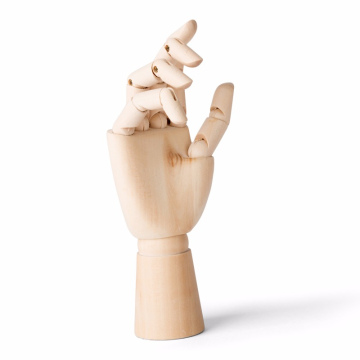The Origins of Ramen
Discover the rich history of ramen, tracing its origins from Chinese noodle dishes to the beloved Japanese staple it is today. Explore the regional varieties of ramen across Japan, including tonkotsu, shoyu, and miso ramen, each with its unique flavors and traditions. Learn about the cultural significance of ramen in Japanese dining, and gain tips for enjoying authentic ramen experiences, whether in Japan or at home. Dive into the world of ramen and savor the diverse interpretations of this iconic dish.
Chazuke: Japan’s Soothing Rice & Tea Bowl Experience
Chazuke (茶漬け) is a traditional Japanese dish that consists of steamed rice topped with various ingredients and then soaked in green tea or dashi broth. Known for its simplicity and comfort, chazuke holds a special place in Japanese culinary culture as a soothing, quick meal and a staple for both breakfast and late-night snacks. It’s the perfect balance of warmth, comfort, and flavor, making it a go-to dish when someone seeks a light yet satisfying meal.
The Origins of Chazuke: A Humble Comfort Food
The history of chazuke dates back to the Heian period (794–1185) in Japan. During this era, rice was a precious commodity in Japan, and people began to experiment with different ways of consuming it. The dish’s humble origins suggest that it was created as a way to make leftover rice more enjoyable and easier to eat.
It’s believed that chazuke was originally made by simply adding tea to rice, a practice that was common among the aristocracy. Green tea was already a significant part of Japanese culture, and combining it with rice was seen as a quick and nourishing meal. It is often said that chazuke was enjoyed by the noble class as an elegant, simple dish, particularly during the Edo period (1603–1868), when the culture of tea-drinking became more widespread.
The Culinary Evolution of Chazuke: From Simplicity to Flavorful Variations
Over the centuries, chazuke evolved from its basic form of tea over rice into a dish that includes various flavorful toppings and seasonings. The most significant development came during the Edo period, when the practice of adding a variety of ingredients to chazuke became popular among the general population.
- Dashi Broth: In addition to tea, dashi broth made from kombu (seaweed) and katsuobushi (dried bonito flakes) became a common liquid base. This added umami and depth of flavor, making the dish richer and more satisfying.
- Toppings: The addition of pickled vegetables, grilled fish, and seasoned nori (seaweed) became customary. Toppings could also include salmon (especially in sake chazuke) or ume (pickled plum) for extra tanginess. The toppings varied by region, depending on the availability of ingredients, making chazuke a versatile dish that could be tailored to anyone's tastes.
The Culinary Composition of Chazuke: A Harmony of Flavors and Textures
The appeal of chazuke lies in its simplicity, but also in its versatility. Here’s a breakdown of the essential components that make this dish both nourishing and comforting:
- Steamed Rice: The heart of chazuke is steamed rice (typically short-grain Japanese rice). Rice is the staple food in Japan, and in chazuke, it serves as a neutral base that absorbs the flavors of the tea or broth. The rice must be fresh and slightly sticky to ensure it can hold up well when soaked.
- Tea or Dashi Broth: The liquid element in chazuke is key to its flavor profile. Traditionally, green tea is poured over the rice, lending a delicate aromatic bitterness and a clean finish. Alternatively, dashi broth adds a savory umami-rich flavor that pairs beautifully with rice. The use of dashi also elevates the dish into a sophisticated, savory experience.
- Toppings: The toppings are what make chazuke a customizable dish. Grilled fish, such as salted salmon (sake), takuan (pickled daikon), nori, and sesame seeds are common additions. Umeboshi (pickled plums) are another classic topping, contributing a sharp, tangy contrast to the rice and tea. These elements provide a variety of textures and flavors, from crispy to creamy, and salty to sweet, making each bite exciting.
- Seasonings: Seasoning options like soy sauce, wasabi, or shichimi togarashi (a spice mix) are often added to enhance the dish further. These can introduce a hint of spiciness or saltiness, adding depth and complexity to the experience.
Chazuke in Japanese Culinary Culture: A Comforting Tradition
In Japanese culture, chazuke is more than just a meal—it’s a dish that carries emotional significance. The dish is often associated with comfort, recovery, and home-cooked nourishment. Many Japanese people turn to chazuke when they are feeling under the weather, as it is light, easy to digest, and soothing to the stomach. It is also a go-to dish after a long day, offering both comfort and warmth in a bowl.
Chazuke also holds cultural importance in terms of waste reduction and economy, as it was traditionally made with leftover rice. This practice reflects a key aspect of Japanese culinary philosophy, which values resourcefulness and minimizing food waste. Chazuke thus represents the notion of taking something simple and turning it into something nourishing and satisfying.
The dish is also a part of Japanese tea culture. It’s not uncommon to find chazuke served at the end of a formal tea ceremony or after a meal as a refreshing, cleansing dish. The integration of tea and rice in this context emphasizes the zen-like simplicity of Japanese cuisine.
Modern Variations of Chazuke: Adapting to Contemporary Tastes
While traditional chazuke remains widely popular in Japan, it has also been adapted to suit modern tastes and global influences. Contemporary versions of the dish might feature a variety of toppings like avocado, fried chicken, or tofu, making it more accessible to those looking for a vegetarian or international twist on the classic.
Chazuke has also gained popularity in Japanese restaurants abroad, where it is often presented in a more refined, gourmet-style presentation. In these restaurants, chazuke may be served as part of a multi-course meal, often paired with high-quality green tea or matcha to bring out the flavors of the dish.
Moreover, instant chazuke versions have emerged in recent years, allowing people to enjoy this comforting dish at home with minimal preparation. These pre-packaged versions contain dried rice, soup base, and toppings that can be quickly rehydrated with hot water, making them a convenient and accessible option for busy people.
Conclusion: Chazuke – A Symbol of Japanese Culinary Comfort
Chazuke is a dish that embodies the core of Japanese culinary philosophy—simplicity, balance, and nourishment. From its humble beginnings as a way to use up leftover rice to its place as a beloved comfort food, chazuke has stood the test of time as a quintessential part of Japanese cuisine.
Its versatility, soothing flavors, and ability to adapt to seasonal ingredients make it a dish that continues to evolve while staying true to its roots. Whether enjoyed as a light meal, a late-night snack, or a recovery dish, chazuke remains an essential part of the Japanese culinary experience, offering a taste of home and comfort in every bowl.






